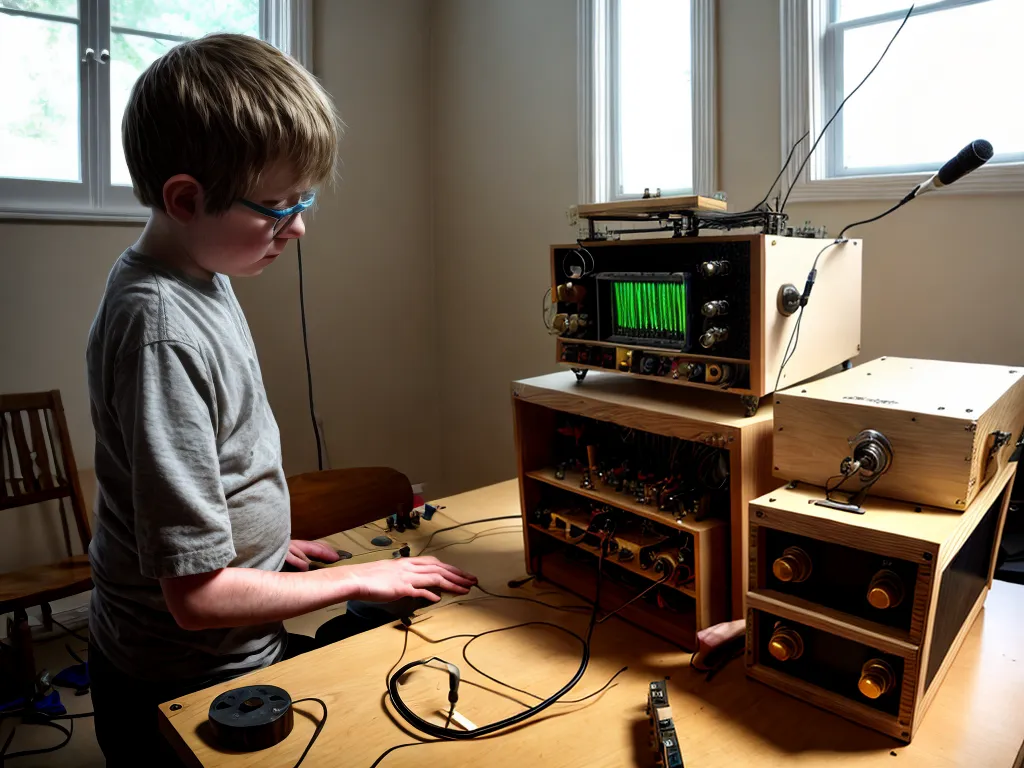
Building a Homemade Theremin Using Scrap Materials
I recently decided to take on the challenging project of building my own theremin using scrap materials I had lying around. As someone with a background in electronics and music, I was excited for the creative challenge. In this article, I'll walk through my entire process of building a homemade theremin from start to finish using scrap materials.
What is a Theremin?
For those unfamiliar, a theremin is an electronic musical instrument that is controlled without any physical contact from the player. The player simply moves their hands in proximity to two antennas to control pitch and volume. The theremin was invented in 1919 by Russian physicist Leon Theremin, and produces an eerie, oscillating sound that is commonly associated with science fiction films.
While theremins can be purchased, I wanted the satisfaction and learnings of building my own homemade version using spare parts. This required creativity, patience, and persistence, but the payoff of having a working instrument I made myself was incredibly rewarding.
Gathering Materials and Components
The first step was taking stock of what materials and components I already had on hand that I could repurpose:
- Several old analog radios that I could salvage parts from like capacitors, resistors, transistors, and wiring
- A basic understanding of electronics and soldering equipment
- A wooden box to mount the circuitry and antennas
- Misc. wires, screws, and adhesives lying around
In addition to the scrap materials, there were a few key electronic components I needed to purchase:
- Two variable capacitors to control pitch and volume
- Two antennas made from metal rods
- An audio amplifier to amplify the output signal
- A 9V battery to power the circuit
Having all of the materials I needed, it was time to design the circuitry.
Designing and Building the Circuit
The heart of a theremin is the oscillator circuitry that takes input from the antennas and converts it to an audio signal. I designed a basic Colpitts oscillator circuit using a transistor and my variable capacitors.
I carefully laid out and soldered the components on a perforated circuit board in a way that minimized noise and interference. I included wiring terminals to connect the pitch and volume antennas as well as the audio output.

With the circuit board complete, I mounted it securely inside the wooden box along with the 9V battery. I drilled holes for the two antennas and audio output jack.
Connecting and Testing the Theremin
The final steps were connecting all of the wires between the circuit board, power supply, antennas, and audio amplifier. I used shielded audio cable for the output to minimize interference.
When powered on, I slowly moved my hands near the pitch and volume antennas and could hear the eerie oscillating tones change in real time. I was thrilled that my homemade theremin actually worked on the first try!
However, the sound quality needed some fine tuning. I carefully adjusted the variable capacitors to find the right frequency ranges and volumes for each antenna. I also experimented with different antenna positions and lengths to fine tune the instrument's responsiveness and sound.
After many rounds of tweaks and tunes, I had a great sounding DIY theremin under my fingers!
Playing and Enjoying the Finished Product
Now it was time for the real fun - playing music with my one-of-a-kind creation! I started slowly with simple melodies to get a feel for the theremin's unique playstyle.
With practice, I got more comfortable shaping melodies by moving my hands precisely near the antennas. I even composed a few original songs with sci-fi sounding effects.
Though challenging at first, playing the theremin was incredibly rewarding. I felt a deep sense of accomplishment hearing music literally coming out of thin air! The experience also gave me newfound respect for theremin virtuosos.
Key Takeaways from the Project
Looking back, I learned so much from the process of building a theremin from scrap parts:
- Hard work and persistence pays off when bringing a complex project to life
- Understanding circuits, wiring, and soldering is crucial for DIY electronics
- Creativity and resourcefulness are needed to repurpose scrap materials
- Theremins create magical music but require practice and mastery
This passion project took patience and dedication, but the end result was well worth it. I now have a unique handmade instrument and invaluable skills in electronics and building from scratch. My homemade theremin will provide years of musical enjoyment and spark inspiring conversations about the marvels of DIY engineering.